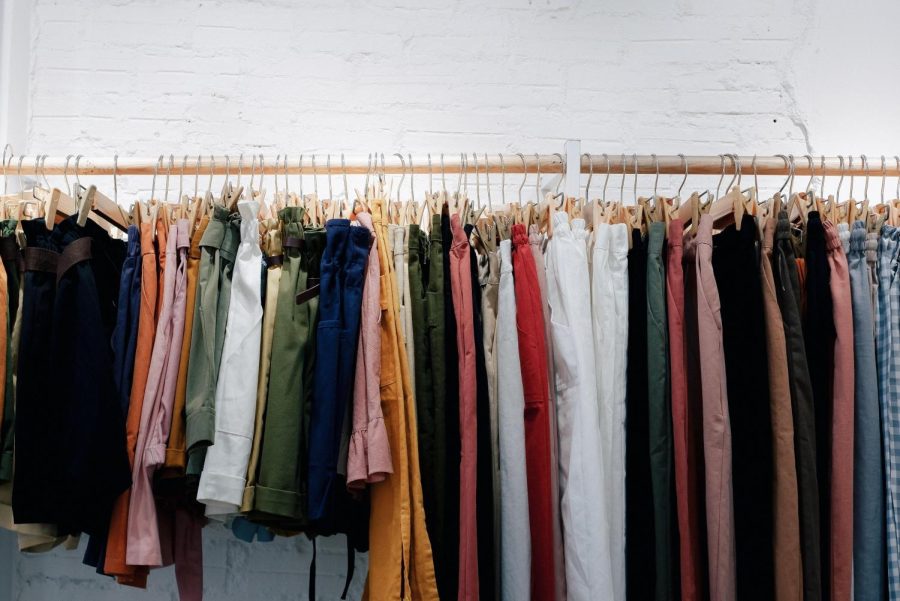Do well, live well, dress well: Chimes’ sustainable fashion guide
According to Marcrom and Kramp, thrifting and avoiding fast fashion brands are great ways to promote sustainability.
Composting food scraps and recycling garbage come to mind when we think about living sustainably. But did you know that curating a closet consisting of environmentally friendly pieces can also help you achieve a sustainable lifestyle? Chimes spoke with sustainability coordinators Evelyn Marcrom and Jessica Kramp about what it means to be fashionable while simultaneously being environmentally conscious.
Understanding what ‘sustainable fashion’ is
“I would describe sustainable fashion by saying it is fashion that does not have negative effects on our planet or people,” said Kramp, a sophomore studying environmental studies and German.
Understanding sustainable fashion, according to both Kramp and Marcrom, entails not only understanding how the items themselves have an environmental impact, but also how the garments’ production has an impact on the workers who create them. To do this, it is important to conduct research not only on what materials are being used to create clothing and accessories, but also on how the garments were manufactured.
What you wear should not compromise someone’s quality of life.
“It’s understanding where your clothes are coming from,” said Marcrom, a sophomore double-majoring in environmental health and conservation and history. “What you wear should not compromise someone’s quality of life.”
Beyond thrifting
Finding fashionable garments at thrift stores has become a global sustainable fashion trend. But while shopping at thrift stores is a good option to create a sustainable closet, it isn’t the only option out there.
“A great place to get sustainable clothing, if you need clothing in the first place, is to do a swap with your friends! They most likely have great pieces they’re willing to trade, so that you can upcycle your closet,” said Kramp.
In addition to wearing previously worn items, new clothes from sustainable apparel manufacturers is an option. However, Kramp advised that it is important to be cautious when looking at these brands. ”Green-washing,” brands trying to make themselves appear sustainable when they are not, is common in fashion. Kramp suggested the website goodonyou.eco, which rates brands based on how sustainable they really are so buyers can make more informed decisions.
Buying with intention
Sustainable fashion does not end once you obtain the items. Buying durable and multipurpose items reduces the frequency of purchases. According to Marcrom, purchasing items thoughtfully rather than in excess has a huge environmental impact. Finally, choosing products with a good fit can help them last longer, since well fitting items can be worn throughout the year.
Making items last
It makes a difference to wash products with sustainability in mind, as the manner they are laundered impacts how long they last. According to both Marcrom and Kramp, making sure to research how to best clean items for maximum longevity based on aspects such as what the items are and what fabrics they are made of, and using environmentally friendly cleaning products while doing so is key. Swapping current items with friends and family in exchange for new ones, mending and altering items by sewing and repurposing them as décor or cleaning materials can give items fresh life when they look to be reaching the end of their usefulness to you, Kramp said.
Ultimately, sustainable fashion is a process, and not always an easy one. “Shopping sustainably is hard … It is okay if you’re not perfect, none of us are. All that matters is that you try your best and do your part to keep our planet alive.”



